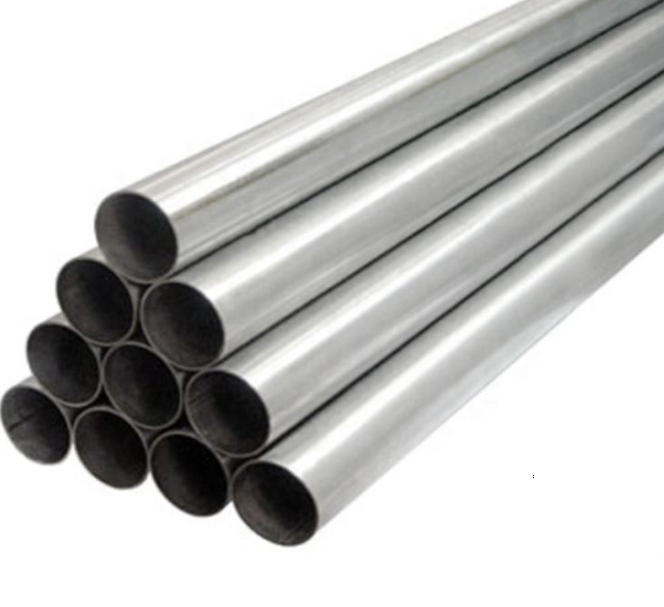Broadly speaking, the corrosiveness of materials is caused by the destruction of surrounding metallic and non-metallic materials by environmental factors. Simply put, the chemical change in the state and electrochemical consumption of metal compounds is characterized by a decrease in the nature of metal corrosion from the usual elemental state of the ore. The presence of metals tends to emit energy to a less energetic, more stable state of the ore. This release of energy is the driver of corrosion. The process of corrosion is the process of releasing energy. Metal pipe corrosion is a manifestation of this widespread natural phenomenon.
It refers to the chemical action directly caused by chemical corrosion which destroys metal and non-electrolyte. The corrosion process is a pure redox process, that is, namely, corrosive oxidant corrosion products directly reduce surface atoms and metal interaction, metal is oxidized as a corrosive medium is reduced. For example, occurred in the high-temperature oxidation of iron casting, rolling and heat treatment process is metal in high-temperature gas chemical corrosion. Chemical corrosion can be divided into non-gas corrosion and electrolyte solution corrosion. Characterized in the reaction process is not current. Electrochemical reactions of metals in electrolyte solutions due to corrosion are called dielectric corrosion. It is the most common form of metal corrosion, characterized by the flow of electricity corrosion process. Metal corrosion occurs in seawater and industrial water, and all kinds of acid and alkali solutions are electrochemical corrosion. Electrochemical corrosion process by the cathodic process, the electron transfer process and a part of the composition of the anode. The electrochemical electrochemical corrosion types of metal pipes mainly include atmospheric corrosion, soil erosion corrosion, corrosion solution and stray current corrosion. In addition, bacteria corrode.
Steel plating adopts plating, plating, hot dip plating, diffusion coating, etc., to the corrosion-resistant metal plating the surface of steel plate. Plating anodes and cathodes of the species. If the surface of galvanized steel, tin and other metals, plating potentials more negative potential than the matrix of iron, is anodic coating. This coating can play the role of the sacrificial anode, which is not smooth for the steel surface is applicable, even if porous, defect, still better protection of the steel pipe. The other is a potential corrosion inhibiting coating metal than steel potentials are cathodic coating, such as lead, tin, copper, and nickel. The Cathodic deposits are usually only complete enough to protect the steel better, otherwise the corrosion of the steel will accelerate. Large underground pipeline Corrosion protection layer insulation, such as oil and gas pipeline, pipe wall corrosion is serious, often accompanied by anti-corrosion insulation engineering. The anticorrosion coating is evenly coated on the dense steel wall, so that the corrosion environment is so isolated that the circuit of the corrosion cell is cut off and the pipeline is protected from corrosion. For example, pipes and walls are coated with rust epoxy asphalt coating, then coated with fiberglass cloth and alternated layers are constructed to erode the thickness of the insulated layer. Steel has good adhesion, good electrical insulation, high mechanical strength, flexibility, water resistance, heat resistance and chemical stability.
In the petroleum and chemical industries, the corrosion of steel pipe wall corrosion cannot be ignored. Wall coating is one of the effective antiseptic measures. Common anticorrosion coatings include epoxy paint, phenolic resin modified epoxy paint, polyurethane vinegar anticorrosive paint, epoxy polyurethane paint, etc. Special fillings such as glass flake, magnetic iron oxide powder, zinc powder and asbestos powder are often added to anticorrosion coatings to improve the anticorrosion effect. It is characterized by advanced construction technology, simple construction and low cost. Pipe wall corrosion protection and rubber linings, plastic liners such as polyethylene, polyvinyl chloride, polystyrene, polytetrafluoroethylene, nylon, FRP Lining, enamel lining, etc. These health measures are difficult and have limitations.
Pipeline anticorrosion coating can improve the loop resistance of metal corrosion cells, reduce corrosion current and inhibit corrosion. However, in practice, due to various factors, it is difficult to achieve the integrity of the coating, especially when long-distance pipelines are buried in the ground, the coating often appears missing or deposited in the office or corrosion damage. Therefore, in some cases, simple anticorrosion coating has not achieved the purpose of preventing corrosion. According to the principle of electrochemical corrosion metal corrosion, there is no cell cathode corrosion but only anode corrosion. The method makes use of certain metals in the protected cathode to prevent metal corrosion generation. This method is called cathodic corrosion protection, usually in the depot for the protection of buried pipelines. Cathodic protection is divided into the impressed current cathodic protection and sacrificial anode protection.
 Solution treatment for Stainless Steel Pipe
Solution treatment for Stainless Steel Pipe
 Solution treatment for Stainless Steel Pipe
Solution treatment for Stainless Steel Pipe